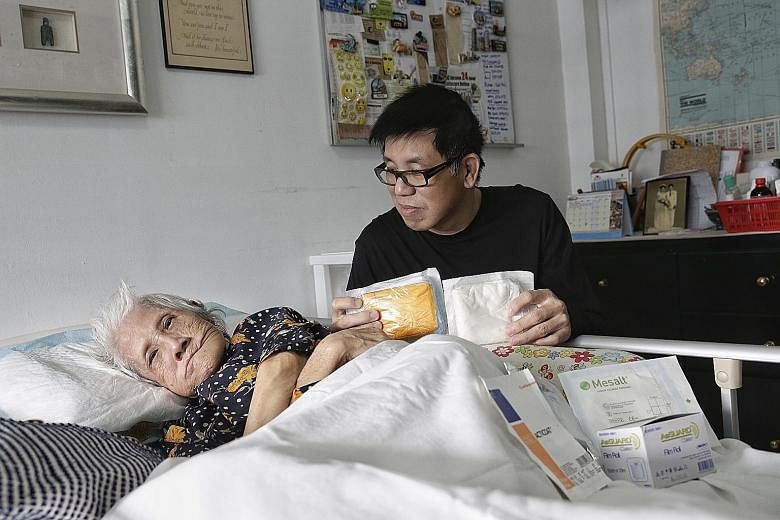A diabetic woman in her 80s was admitted to Changi General Hospital (CGH) with a huge pressure ulcer that covered both her buttocks.
She had been cared for by a maid who did not tell her employer, the woman's son, of the ulcer when it first started. The maid had tried to treat the damaged area with tapioca powder, which inflamed the wound and made it worse.
"It was the worst pressure ulcer I had ever seen," geriatrician Barbara Rosario said of the 2013 case. She has been treating seniors for the past decade and been with CGH since that year.
That patient marked "the start of our journey with pressure ulcers" for the hospital, said Dr Rosario.
It has shed light on a serious issue facing elderly patients: pressure ulcers or sores caused by friction or prolonged pressure, especially over a bony area, such as the hips, tailbone or ankle (see graphic).
While hospitals do track ulcers that develop when a patient is hospitalised, they need to report only those that are at stages 3 and worse to the Ministry of Health.
CGH started checking patients admitted to its two geriatric wards for pressure ulcers in December 2013.
Between May and December the next year, 809 patients were admitted to the two wards. Among them, 117 patients, almost all over the age of 80, were admitted with one or more pressure ulcers.
Three in four of them were either bed- or chair-bound. The rest were able to move around, though some needed assistance.
A smaller number, about 3 per cent of patients, acquired an ulcer while in hospital. But five times that number already had ulcers.
The hospital's pressure team also found that such patients tended to stay two days longer in hospital, with almost one in four being re-admitted within the month, compared with one in six patients with no ulcers.
Also, the risk of pressure-ulcer patients dying is five times higher than for other patients. Of the 809 patients, 13.2 per cent with ulcers died compared with 2.7 per cent of those with no ulcers. Their bills were also "significantly higher".
Said Dr Rosario: "The number of pressure ulcers we are seeing here is worrying and predominantly coming from the community."
The ulcers are spotted in various stages of severity - from those with early redness that does not disappear when pressed, to very severe cases where the flesh is rotten and the bone is laid bare.
Slightly more than a third of the cases the hospital saw were in the early stage and easily treated.
Patients who are bed-bound need to be turned every three hours so they do not put too much pressure on any part of their bodies.
"Early intervention is crucial in the prevention of pressure ulcers," said Dr Rosario. But once they get to a bad stage, they may never be cured, even though they may be controlled.
Advanced Practice Nurse Png Gek Kheng, one of the four-member pressure-ulcer team, said some families of patients think having a black patch of skin is fine, not realising that it is dead flesh that needs to be sloughed off.
Mr Tony Goh, 58, found out about his mother's big pressure ulcer on her spine only when she had a stroke and was admitted.
Madam Mary Seet, 84, needed an operation to remove the rotting flesh. She was in hospital for more than half a year.
Although her condition has improved, Mr Goh still spends more than $1,000 a month on the medicated dressing that she needs to treat what is left of the ulcer.
facebook.com/ST.Salma

